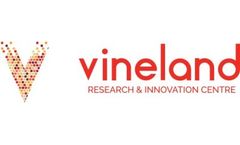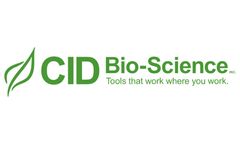Refine by
Plant Phenotyping Articles & Analysis
13 articles found
The ability to detect genetic variation among plant germplasm is essential for crop improvement programs, helping researchers understand differences and similarities at both phenotypic and molecular levels. Lifeasible now offers a comprehensive suite of detection techniques to accommodate projects of all complexities and budgets: l Morphological Markers: ...
Selecting a Drone to Meet Your phenotyping Needs: As drones have become better, less expensive, and easier to use, more researchers have been incorporating them into their trial assessment programs. ...
ByHiphen
De novo domesticated S. pimp lines were crossed with AC male sterile lines, and F1 plants presented an intermediate phenotype compared with the parents. ...
3D assessment of plants became a commonly used technology in plant phenotyping to measure morphological and architectural features of plants. Although, 3D sensors such as PlantEye can be the workhorse for every phenotyping platform, it still lacks the ability to measure changes in color or other spectral ...
Approximately a year ago, I entered the plant phenotyping arena and in my first blog for our company posed the following ...
The berry breeding program at the Agriculture and AgriFood Canada (AAFC) Kentville Research and Development Centre in Kentville, Nova Scotia, is now the Small Fruit Germplasm Development Program. The new approach to plant breeding will allow the fruit industry to be more involved in the release of new Canadian varieties of strawberries, raspberries, blackberries and grapes that are developed ...
Around the world, plant breeders are resisting what they see as corporate control of the food supply by making seeds available for other breeders to use. Frank Morton has been breeding lettuce since the 1980s. His company offers 114 varieties, among them Outredgeous, which last year became the first plant that NASA astronauts grew and ate in space. For nearly 20 years, Morton’s work was ...
ByEnsia
What are leaves and why are they important? A leaf is a plant organ, exposed to the external environment. Leaves are the primary way plants interact with the atmosphere and take care of their basic needs. ...
The objective of this study was to measure the genetic relatedness among entries of the Cynodon clonal forage bermudagrass core collection and seven commercial forage cultivars using plant phenotype and molecular marker data from amplified fragment length polymorphisms. The collection was assessed for 22 phenotypic traits, including forage ...
The low-phytate (LP) trait in plant seeds offers important nutritional and environmental benefits for food and feed uses. ...
Progeny families were evaluated for disease reactions, plant height (PH), and heading date (HD) in replicated field trials for 2 yr and genotyped with 149 simple sequence repeat markers. ...
Earliness and plant height traits are key targets in lentil (Lens culinaris Medikus) breeding and are quantitatively controlled. Recombinant inbred lines (RILs) are useful in genetic mapping studies of quantitative traits. The objectives of this study are to develop a genetic map and identify genome regions associated with earliness and plant height using RILs derived from a cross between ‘Eston’ ...
Competitive ability of wheat is influenced by a range of attributes such as plant height, tiller number, and light interception. This study focused on the effect of plant height on weed competitiveness of a set of near-isogenic wheat lines (NILs). The set included seven bread wheat (Triticum aestivium L.) and six durum wheat (T. turgidum L.) cultivars, each having a semidwarf and tall ...







